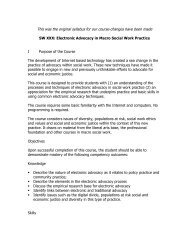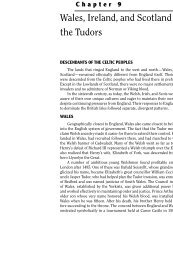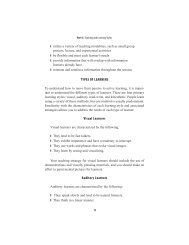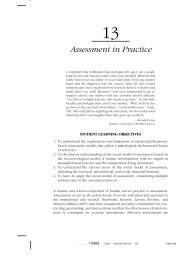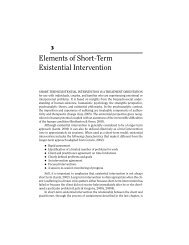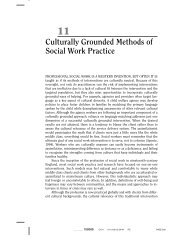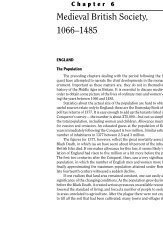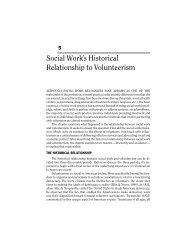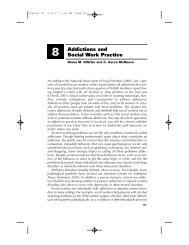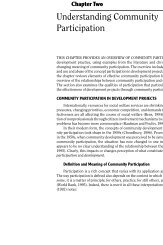Society and Economy in England, 1715–1763 - Lyceum Books
Society and Economy in England, 1715–1763 - Lyceum Books
Society and Economy in England, 1715–1763 - Lyceum Books
You also want an ePaper? Increase the reach of your titles
YUMPU automatically turns print PDFs into web optimized ePapers that Google loves.
48 Part I The Age of the L<strong>and</strong>ed Oligarchy<br />
Mr <strong>and</strong> Mrs Andrews, by Thomas Ga<strong>in</strong>sborough (1748). This pa<strong>in</strong>t<strong>in</strong>g reflects the comfortable<br />
self-assurance of the English country gentry <strong>in</strong> the eighteenth century.<br />
<strong>and</strong> women ordered themselves <strong>in</strong> a status hierarchy. The basic sets of relationships<br />
should be envisioned as vertical, not horizontal. Each person was thought to have<br />
been ascribed at birth a position <strong>in</strong> the natural—<strong>in</strong>deed, div<strong>in</strong>ely established—<br />
peck<strong>in</strong>g order, <strong>and</strong> each felt that his or her loyalty was to social superiors, not to<br />
fellow workers. Hence the social structure was like a status ladder, or rather a number<br />
of parallel ladders, each rung be<strong>in</strong>g a status gradation with its own generally<br />
accepted duties <strong>and</strong> privileges. If a person moved up or down the ladder, it was off<br />
one rung <strong>and</strong> onto another, the ladder itself rema<strong>in</strong><strong>in</strong>g unchanged. Dr. Samuel<br />
Johnson, the great wit <strong>and</strong> man of letters, remarked that the English people were<br />
set <strong>in</strong> their hierarchical places “by the fixed, <strong>in</strong>variable rules of dist<strong>in</strong>ction of rank,<br />
which create no jealousy, s<strong>in</strong>ce they are held to be accidental.” Thus, when the English<br />
talked about social position, they spoke <strong>in</strong> terms of “degrees,” “order,” <strong>and</strong><br />
“ranks”—gradations of status, not of class.<br />
“Mank<strong>in</strong>d,” Dr. Johnson observed, “are happier <strong>in</strong> a state of <strong>in</strong>equality <strong>and</strong> subord<strong>in</strong>ation.”<br />
Such was the view unanimously held by those at the top of the hierarchy<br />
<strong>and</strong> ceaselessly preached to those below them. This is not surpris<strong>in</strong>g, s<strong>in</strong>ce the<br />
distance <strong>in</strong> wealth <strong>and</strong> prestige from top to bottom was enormous. On the highest<br />
rung of the hierarchy stood the titled nobility, consist<strong>in</strong>g of fewer than two hundred<br />
families. All the nobles were great l<strong>and</strong>lords who dom<strong>in</strong>ated their counties <strong>in</strong><br />
near-majestic splendor. They lived <strong>in</strong> palatial country homes, often gigantic edifices<br />
of close to one hundred rooms, <strong>and</strong> enjoyed on average £8,000 a year. A few, like the<br />
duke of Bedford <strong>and</strong> the duke of Devonshire, raked <strong>in</strong> more than £30,000 a year<br />
from rentals alone—the equivalent of many millions of dollars today. Just below<br />
the nobility came the ranks of the big l<strong>and</strong>lords—baronets, knights, esquires, <strong>and</strong>



